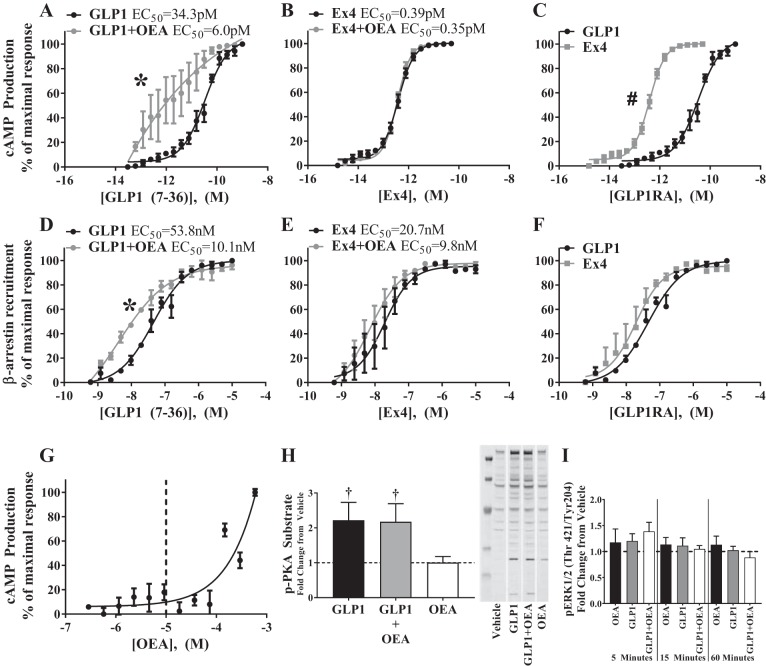Fig. 1.
Oleoylethanolamide (OEA) enhances glucagon-like peptide-1 (GLP-1)-mediated cAMP production and β-arrestin recruitment to the GLP-1 receptor (GLP-1R) without affecting PKA activity. A–G: cAMP production (A–C and G) was measured in cAMP Hunter CHO-K1 GLP-1R Gs (CHOK1-GLP-1R) cells, and β-arrestin recruitment to the GLP-1R (D–F) was measured in CHOK1-GLP-1R-β-arrestin cells after stimulation with various concentrations of GLP-1 or exendin-4 (Ex4) in the absence and presence of OEA (9.2 µM). Dashed line in G is the concentration at which OEA was used for all cell experiments (9.2 µM). Data points reflect the mean ± SE of 3 experimental replicates containing 4 technical replicates each. *GLP-1R agonist (GLP-1RA) vs. GLP-1RA+OEA, #Ex4 vs. GLP-1 (P < 0.05). The x-axis values represent log [Peptide]. H: phosphorylation of PKA substrates was assessed in CHOK1-GLP-1R cells after stimulation with GLP-1 (20 pM), OEA (10 µM), or GLP-1+OEA. Bars reflect means ± SE of 3 experimental replicates consisting of 2 technical replicates each. †vs. vehicle (P < 0.05). Representative immunoblot is shown. Images obtained from different locations on the original immunoblot are separated by white spaces. I: PathScan (Akt Signaling Antibody Array Kit, no. 9700; Cell Signaling Technology) analysis was used to assess phosphorylation of phospho-ERK1/2 (Thr421/Tyr204) in CHOK1-GLP-1R cells after stimulation with vehicle, GLP-1 (20 pM), OEA (10 µM), or GLP-1+OEA for 5, 15, or 60 min. Bars reflect means ± SE of 4 experimental replicates consisting of 2 technical replicates (P < 0.05).

